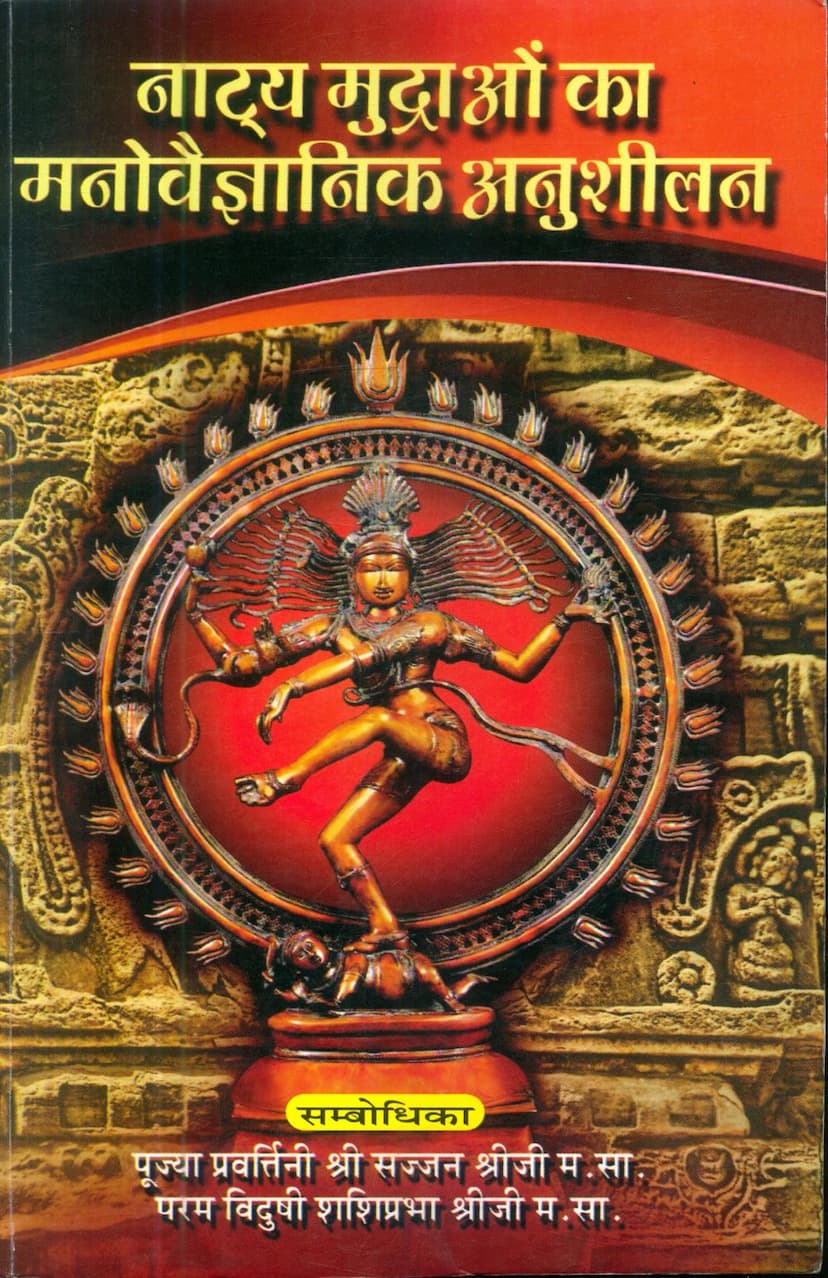Natya Mudrao Ka Manovaigyanik Anushilan
Added to library: September 2, 2025

Summary
This document is the Table of Contents and preliminary sections of the book "Natya Mudrao Ka Manovaigyanik Anushilan" (A Psychological Study of Dance Postures) by Saumyagunashreeji, published by Prachya Vidyapith. Here's a comprehensive summary based on the provided pages:
Book Title: Natya Mudrao Ka Manovaigyanik Anushilan (A Psychological Study of Dance Postures)
Author: Saumyagunashreeji (Dr. Sadhvi Saumyaguna Shree)
Publisher: Prachya Vidyapith (under Sajjan Mani Granthmala Publication)
Subject: This extensive work is a D.Litt. thesis focusing on the comparative and critical study of mudras (hand gestures and postures) from various traditions, with a particular emphasis on their psychological and physiological effects.
Key Themes and Content:
-
De-dedication and Tributes: The book is dedicated to Dr. Sagarmal Jain, the research director, acknowledging his contribution. Several Acharyas and respected figures in the Jain tradition offer their blessings and endorsements, highlighting the significance of the research.
-
Introduction to Mudras: The initial sections emphasize mudras as an ancient and relevant science based on the five elements. They are presented as an integral part of yogic practices like meditation, asanas, and pranayama. Mudras are described as a way to express emotions and act as "switchboards" for the body's "machine," capable of bringing about significant changes in the physical, mental, intellectual, and spiritual realms.
-
Psychological and Physiological Aspects: A major focus is on the scientific and psychological underpinnings of mudras.
- Chakras: Chapter 1 details the impact of mudras on the seven primary chakras (Mooladhar, Swadhisthan, Manipur, Anahata, Vishuddhi, Ajna, Sahasrar) and their associated psychological and physical benefits. It explains how each chakra influences emotions, bodily functions, and spiritual development.
- Glandular System: The text elaborates on how mudras stimulate and balance endocrine glands (Pineal, Pituitary, Thyroid, Thymus, Adrenals, Pancreas, Gonads), which regulate various bodily functions, mood, and behavior.
- Five Elements (Panch Mahabhutas): Mudras are presented as a tool to balance the five elements (Earth, Water, Fire, Air, Ether) within the body, as each finger is associated with a specific element.
-
Classification and Study of Mudras: The book systematically categorizes and analyzes mudras from different traditions:
- Chapter 2: Natya Mudras (from Bharat Muni's Natya Shastra): This chapter provides detailed descriptions, intended purposes, and benefits of numerous Asanyukta Hast Mudras (single-hand gestures), Sanyukta Hast Mudras (double-hand gestures), and Nritta Hast Mudras (dance-specific hand movements) as outlined in the Natya Shastra. It includes visual illustrations and discusses their psychological impact on chakras and glands.
- Chapter 3: Mudras from Vishnu Dharmottara Purana and other Puranic Texts: This chapter discusses mudras mentioned in Puranic literature, noting their similarity to Natya Shastra mudras but also highlighting minor variations in names and counts.
- Chapter 4: Additional Mudras from Abhinaya Darpana: This chapter details mudras found in Abhinaya Darpana, a work following Natya Shastra, noting additional mudras and their potential benefits. It also mentions mudras associated with specific deities and avatars.
- Chapter 5: Mudras in Indian Traditions (Methods and Objectives): This extensive chapter covers a wide array of mudras prevalent in various Indian traditions, providing their names, methods of formation, and intended uses. This includes mudras related to deities, relationships, and specific phenomena.
- Chapter 6: Hand Mudras in Sculpture and Iconography: This chapter explores the presence and identification of mudras in ancient Indian sculptures and iconography across Jain, Buddhist, and Hindu traditions. It references scholarly works to trace the historical usage and symbolic meanings of various mudras depicted in art.
- Chapter 7: Conclusion - Mudras Useful in Physical and Spiritual Healing: This concluding chapter summarizes the therapeutic applications of mudras for physical, emotional, and spiritual ailments, providing a chart correlating specific mudras with various health conditions. It stresses the importance of faith, consistent practice, and seeking expert guidance.
-
Psychological Analysis: The "Manovaigyanik Anushilan" aspect is evident throughout the book, as it links each mudra to specific chakras, glands, and psychological states, explaining how they influence emotions, mental clarity, and spiritual growth.
-
Scope and Magnitude: The research is presented in 23 volumes, a testament to the author's extensive effort. The inclusion of mudras from various traditions (Jain, Hindu, Buddhist, Yogic, and Natya) makes the work comprehensive and universally applicable.
-
Author's Journey: The preliminary sections and dedications highlight the author's long dedication (17 years) to this research, overcoming numerous challenges, and her deep reverence for her spiritual gurus.
In essence, "Natya Mudrao Ka Manovaigyanik Anushilan" is a scholarly exploration that bridges ancient Indian knowledge of mudras with modern psychological and physiological understanding. It presents a vast repository of mudras, their detailed descriptions, methods, historical context, and therapeutic applications, making it a valuable resource for practitioners of yoga, dance, spiritual seekers, and anyone interested in holistic well-being.